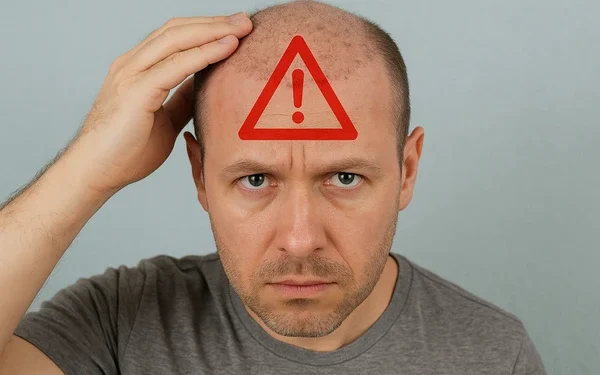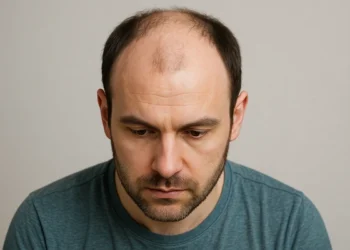If you’re considering a hair transplant, it’s beneficial to understand the potential risks of the surgery in advance. A reputable surgeon will take steps to minimise the chance of surgical complications, including following strict hygiene protocols, using precise techniques and providing clear aftercare instructions. If they fail to meet these standards and you suffer complications as a result, you may be entitled to pursue a compensation claim. This guide to hair transplant red flags outlines which side effects are part of the normal recovery process, the signs of hair transplants gone wrong and the action to take if they have.
What to expect after a hair transplant
Some side effects following a hair transplant are a normal part of the recovery process and should be explained to you by your surgeon before the procedure takes place.
- Scabbing: small scabs usually form around the incision sites during the first two weeks. These are part of the natural healing process and should be left to fall away on their own. Picking at them can dislodge grafts or cause infection, potentially affecting the success of the transplant.
- Itchiness: this is common as the scalp begins to heal and regenerate. Although it can be uncomfortable, scratching should be avoided to protect the delicate grafts.
- Redness: the treated area may appear red, similar to mild sunburn, especially in people with lighter skin. This is due to increased blood flow aiding tissue repair. Redness typically starts to fade within two weeks but may continue into the second month in some cases, particularly if the area is large or the skin is sensitive.
- Shock loss: around the two-week mark, you may notice shedding of the transplanted hairs. This is completely normal and referred to as shock loss – a temporary stage where hairs fall out before regrowing.
Initial regrowth: when new hair begins to appear, it may be fine and light in texture, similar to baby hair. This is an early stage of regrowth and should not be cause for concern. - Thicker growth: between months six and twelve, the hair typically becomes denser and thicker as the follicles establish themselves and continue to grow.
Signs of complications with a hair transplant
Some aspects of a hair transplant must be performed by a surgeon and not delegated to a technician, including the excisions to the donor areas, incisions to the recipient areas and the administration of anaesthesia. These guidelines can be found on the British Association of Hair Restoration (BAHRAS), International Society of Hair Restoration Surgery (ISHRS) and Cosmetic Practice Standards Authority (CPSA).
These standards are designed to protect the patient’s health and the quality of the surgical result. When they are not followed, the likelihood of complications increases, including:
- Overharvesting or excessive scarring in the donor area.
- Improper placement of grafts.
- Hairs growing in the wrong direction (known as inangulation), creating an unnatural hairline.
- Placement of multiple follicles instead of single ones at the hairline, giving a doll-like appearance.
- Sparse or patchy areas caused by poor surgical technique.
- Necrosis and subsequent scarring in the recipient area, which may suggest the use of adrenaline or overly deep incisions.
Seek medical attention if you experience any of these issues. If you’ve experienced these complications because your surgeon failed to take the appropriate measures to prevent them, this is classed as negligence and you could be entitled to claim compensation.
Read More: Top 10 Hair Care Products for a Long-Lasting Taper Fade
What to do if you’re experiencing complications because of negligence
If you’re dealing with complications that may be the result of negligence, it’s advisable to speak to solicitors who specialise in cosmetic surgery negligence claims. They have a thorough understanding of the legal framework surrounding cosmetic procedures and can assess whether the care you received fell below acceptable standards. A specialist solicitor can gather evidence on your behalf, including medical records and expert opinions, and advise you on the level of compensation you may be entitled to based on the harm you’ve suffered.
By recognising the red flags associated with hair transplant surgery, you’ll be better prepared to identify signs that may indicate something has gone wrong during your recovery. Understanding what is normal and what may require further attention can help you take timely action if complications arise.











